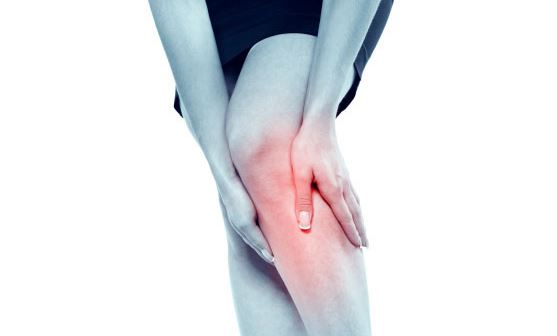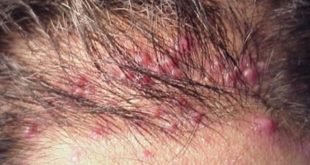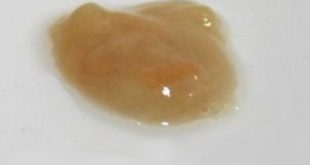Legs hurting at night, leg pain or cramps are a strong, painful contraction or tightening of a muscle that comes on suddenly and lasts from a few seconds to several minutes. It often occurs during pregnancy, after drinking and after exercise. A muscle cramp is also called a charley horse.
Why are legs hurting at night? (Causes)
Contents
Why are my legs Painful; aching; throbbing at night? Reasons for leg pain at night are very variable. At times, this could be a sign of a nerve issue, artery blockages or electrolyte imbalances. How severe the leg pain is at night also varies. It ranges from mild, but sometimes the leg pain is so severe to an extent that it prevents sleep or wakes you up from sleep.

In most cases, the cramp, or charley horse, is brought about by the muscle contracting (shortening and tightening) in a sudden and very violent way. These nocturnal leg cramps normally take place in the calf muscle. But foot and leg cramps do happen at night also.
Cramps in the thighs are however less common. One main reason for the pain is because blood flow to the muscle is restricted. Waste products also build up within the muscle tissue.
1. Pregnancy leg cramps at night (in bed)
According to the 2008 version of Danforth’s Obstetrics and Gynecology by Ronald S. Gibbs and colleagues, about 50 percent of pregnant women develop lower leg cramps. These are most common during the night and usually occur during the third trimester. There is no scientific based treatment or prevention for these cramps, but massage or stretching the muscle can alleviate the symptoms.
Pregnancy cramps may also occur because of decreased amounts of minerals, such as calcium and magnesium, especially in the later months of pregnancy. The extra weight of pregnancy can place strain on the leg muscles, making them more vulnerable to cramping.
2. Muscle cramps after exercise
During exercise, the calf muscles are usually put to task and this put so much pressure on them. To explain this, a strain in your calf could be caused by a failure to warm up prior to starting your workout. As a remedy, rest is required to allow the strain to heal completely, before you resume exercising.
3. Venous fluid
Common aches that come up after exercising could be caused by fluid that has accumulated in your extremities. This occurs when the veins don’t move blood out of your legs quickly enough. The sensations caused by this buildup include cramps, aches and burning. Those who have been generally inactive or who are overweight are more likely suffer from a buildup of fluid in the veins.
In women especially, significant exercise puts so much strain on the legs. The leg cramps are often caused by a pooling of blood in the lower leg, according to the 2002 Women’s Fitness Program Development book by Ann F. Cowlin. These cramps may also be caused by imbalances in calcium and potassium levels. Appropriate cool-down stretches and rest after exercising can prevent the development of these kinds of leg cramps.
4. Bone injury in the leg
When injury such as a broken bone or strained muscle occurs, sometimes the muscles surrounding the injury spasm as a protective mechanism. In this case the spasm tends to minimize movement and stabilize the area of injury.
It is therefore likely that you will spend little time asleep if you have a fracture on any of your bone or bones of your feet. This is a protective mechanism to hinder you from using the leg in order to fasten the healing process.
See also:
- Causes of pain under the right and left shoulder blades
- Pain under the right breast
- Throbbing pain at the back of head
5. Restless leg syndrome
Restless legs syndrome (RLS) is a neurological disorder that is shown by uncomfortable leg sensations that can interfere with resting or falling asleep. Experts believe that low levels of iron in the brain may be responsible for RLS. An imbalance of dopamine is also believed to be involved. About 60% of people with restless legs have a family member with the condition, indicating a strong genetic component.
In the course of leg activity, there are some pains that come by. However, the onset of restless leg syndrome, or RLS, kicks off as soon as the legs are at rest. According to MayoClinic.com, symptoms vary from person to person but might include sensations of burning, aching, tugging or pulling.
The symptoms of RLS can vary in duration and severity for each person. Some people experience mild symptoms intermittently, while others may have more severe symptoms with each episode. No matter what your pain level is, there are some home remedies that you can try to help you manage your condition.
In as much as women suffer from this syndrome more often than men, both genders who experience RLS find that instead of continued rest, pain reduces with continued movement. Relief for RLS symptoms that disrupt night sleep might come from walking, pacing or exercising the legs.
Any person can have restless legs syndrome. However, it is more common in older adults and women. Mild symptoms of RLS may start in early adulthood and then increase with age. Beyond the age 50, RLS symptoms often increase in severity and significantly disrupt sleep. Restless legs syndrome is also common during pregnancy where approximately 40% of pregnant women experience it.
Restless leg syndrome is a condition marked by unpleasant leg sensations while resting and for this case at night. Restless leg syndrome frequency leads to insomnia that is lack of consistent quality sleep.
The cause of restless leg syndrome is unknown in most individuals, but many conditions have been associated with it.
Because this happens more often at night or while lying down, RLS can cause you to have trouble falling or staying asleep, which can in turn decrease quality of life. RLS occurs more in women than men. It can happen at any age, but it affects adults more often, according to the National Institutes of Health.
6. Why do my legs hurt after a night of drinking?
There are two major explanations as to why you are likely to have muscle cramps after a night out drinking.
- The first is that alcohol intake increases the content of lactic acid in your body. Excessive build-up of lactic acid in your body can lead to cramps or pain in your muscles.
- The other explanation is that alcohol, leads to dehydration. Your body ends up falling short on electrolytes, and you tend to experience muscle pain or cramps.
- The third explanation is related to the balance and overworking the muscles when drunk.
- It can also be explained in terms of how the drinking impacts on mineral depletion in the body
Starting off, alcohol can interfere with the breakdown of lactic acid and increase muscle soreness after physical activity, according to the University of California-San Diego. Your body stores alcohol much like it does fat. The alcohol damages amino acids, which are needed for energy.
The amino acids convert to fat, interfering with energy pathways and producing large amounts of lactic acid, causing a decrease in energy and muscle recovery, while increasing muscle soreness. Alcohol also adds calories and contributes to body fat.
Talking of dehydration, drinking too much liquor can cause severe dehydration and cell imbalances that can lead to muscle cramps, muscle pulls and muscle strains for athletes. You can lose muscle mass from alcohol, resulting in decreased strength and performance.
Drinking liquor can lead to the loss of balance and coordination, causing you to overwork your muscles whether you drink moderate or high amounts. This may result in muscle soreness the day after or even beyond
Fatigue can set in during athletic training and competition, increasing the risk of injury. Delayed reaction time and mental capabilities can be affected for several days after alcohol consumption. This heightens the risk of injury because of decreased hand-eye coordination and impaired judgment.
Regarding nutrient absorption and utilization, heavy drinking or binge drinking increases acid production and interferes with the ability of the cells in the body to absorb vitamins and minerals, leading to deficiencies in nutrients. The deficiencies may interfere with your body’s ability to control blood glucose, resulting in low blood sugar, also known as hypoglycemia. Low blood sugar levels can cause a significant loss in energy, disrupting the normal function of your body and muscles.
Remedies for legs hurting at night
The treatment of leg crumps is always based on a particular cause. If it is known then you ought to always try to treat the underlying cause first. There are various approaches that you could consider as far as the underlying causes of the condition are concerned.
There are both medication remedies and home based approaches and activities that can help counter this. The first line treatment should always be trying out some health practices and activities that are very beneficial.
The initial thing that you could do is try stretching exercises. But before then, ensure that you stop any activity that may have induced the cramp and lightly stretch the muscle, gently holding the stretch. You may even massage the muscle while or after you stretch, and maybe apply a heating pad as described below, to the area after stretching.
Another possible and very easy way to stop leg cramps is to hydrate. This approach takes a little longer to address your pain, but once you have had water or a sports drink with electrolytes, you could prevent another cramp.
The other very great remedy is the power of massage. It promotes faster recovery from muscle damage that causes leg pain. In a 2012 study published in the Science Translational Medicine journal, researchers concluded that 10 minutes of massage therapy attenuates inflammatory signaling after exercise-induced muscle damage.
The other very important activity is to walk around. If you are experiencing leg cramps, the best thing that you can do is walk around. This will send the signal that your muscle needs to contract and then relax. If all else fails, and you continue to have regular muscle cramps, it is better that you consider getting regular massages, which is very crucial whether you have muscle cramps or not.
In addition, massage improves blood circulation and helps relieve stress and anxiety. To have optimal effects:
- Rub some warm olive, coconut or mustard oil on the affected area.
- Using gentle yet firm strokes, massage your legs for about 10 minutes.
- Do this 2 or 3 times daily as needed.
- You can also use a self-massage device or apply pressure to sore muscles using a tennis ball.
Not only that, supplements on the other hand also continue being useful in this condition. When they are prescribed and used appropriately, they very useful. They can help to provide immediate relief that you desire.
Vitamin E supplements or Vitamin B complex may be helpful. Magnesium supplements have also shown some benefit, mostly in pregnant women. Diphenhydramine and calcium channel blockers may be suggested by your doctor.
Quinine was previously used for the treatment of nocturnal leg cramps. However, due to its potential for serious and life-threatening adverse effects (cardiac arrhythmias, thrombocytopenia, and hypersensitivity reactions), it is no longer recommended as a treatment option.
Apart from that, you could also consider take some tablets of magnesium supplements. Magnesium has been suggested for treating pregnant women’s muscle cramps, but more studies are needed. Talk to your doctor before taking any supplements if you’re pregnant. “My first recommendation for patients coming in with leg cramps is magnesium,” says Sarah Thompson, a doula and acupuncturist at Sacred Vessel Acupuncture.
If you regularly have leg cramps that are not related to a more serious condition, you might try adding more magnesium to your diet. Nuts and seeds are excellent sources of magnesium.
On the other hand, training yourself to use a hot soak may help you greatly. Many professionals like personal trainers, coaches, and physical therapists also recommend magnesium on the outside of your body, in the form of Epsom salts. This old-school remedy can be applied to a wet cloth and pressed onto a cramped muscle, or you can add some to a hot bath for a soak.
The other option is to use the home prepared remedies comprising of readily available ingredients. These are mainly food products. They are easy to prepare and use. They are also very effective in the long run.
The first one you could consider is turmeric. It is a very effective home remedy for leg. The product has antioxidant as well as anti-inflammatory properties. This will be very crucial if the cramps are brought about by injury and trauma to the feet. The compound curcumin in turmeric inhibits a number of different molecules that play a role in inflammation and pain.
The procedure is as follows:
- Mix 1 teaspoon of turmeric powder with enough warm sesame oil to make a paste.
- Apply it on the affected area and rub gently.
- Wait 30 minutes before rinsing it off with warm water.
- Do this twice daily as needed.
Also, you could drink a glass of hot turmeric milk once or twice daily. The other option is to take turmeric as a dietary supplement, but only under your doctor’s guidance. You should however be cautious that if you are taking blood-thinning medicine, consult your doctor before taking turmeric as a medicine.
Apple cider vinegar can also help reduce pain in your leg(s). It is particularly beneficial for arthritis and gout pain. Its alkalizing effect helps dissolve uric acid crystals in the blood. In addition, it helps remove the buildup of toxins in the joints and connective tissues. In addition, it provides potassium, calcium and other essential minerals needed to ease pain and inflammation.
Proceed as follows;
- Add 1 to 2 cups of raw, unfiltered apple cider vinegar to a bathtub of warm water.
- Soak the affected leg in the water for 30 minutes, once daily for a few days.
- Also, mix 1 to 2 tablespoons of raw, unfiltered apple cider vinegar in a glass of warm water,
- Add a little raw honey and drink it twice daily.
Epsom Salt Soak is yet another very beneficial remedy. This contains magnesium, an important electrolyte that helps regulate nerve signals in the body. It even works as a natural muscle relaxant and helps reduce pain, inflammation and swelling. The procedure is as follows:
- Add ½ cup of Epsom salt to a hot bath and stir it well.
- Soak your legs in this water for 15 minutes.
- Repeat 2 or 3 times a week.
- Also, eat more magnesium-rich foods, such as bananas, pumpkin seeds, tofu, soymilk, walnuts, blackstrap molasses, whole grains and green leafy vegetables.
Yet again, Tart Cherry Juice is very beneficial. If strenuous physical activity is the cause of your leg pain or muscle soreness, drink tart cherry juice. The antioxidant and anti-inflammatory properties of tart cherries help prevent and treat soft tissue injury and pain.
In a 2012 study published in the Medicine and Sports Science journal, researchers concluded that tart cherry juice is a safer way to treat muscle pain and inflammation as compared to over-the-counter pain relievers.
To prepare this,
- Eat ½ cup of fresh, organic tart cherries or drink 1 cup of tart cherry juice, once daily.
- Ensure that you do not drink tart cherry juice if it causes abdominal discomfort or diarrhea.
The other good way to get control of this condition is to consume potassium rich foods. Potassium deficiency can also contribute to leg pain. Potassium is an important nutrient required for muscle and nerve functioning. It also prevents dehydration.
Such foods include baked potatoes and sweet potatoes with the skin, bananas, plums, raisins, prune juice and tomato juice. You can also take a supplement, after consulting your doctor.
Ginger is another magic product that can rescue you. It contains anti-inflammatory properties that help reduce pain and inflammation. It even improves circulation and blood flow, which helps relieve muscle pain. To effectively achieve relief;
- Massage the affected area with ginger oil 2 or 3 times a day until the pain subsides.
- Also, drink ginger tea 2 or 3 times daily.
- To make this tea, simmer fresh ginger slices in a cup of water for 5 to 10 minutes.
- Add some lemon juice and raw honey for taste.
To add on the list, lemon is a rich source of antioxidants that can help ease pain. It helps maintain the pH level of your body, which in turn prevents pain and inflammation. The procedure to help this out is as follows:
- Mix equal amounts of lemon juice and castor oil.
- Use it to massage the affected area 2 or 3 times a day.
- Also, add the juice of 1 lemon and a little raw honey to a cup of warm water.
- Drink it twice daily


